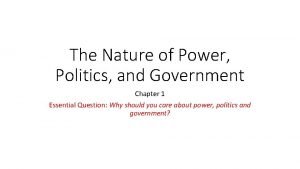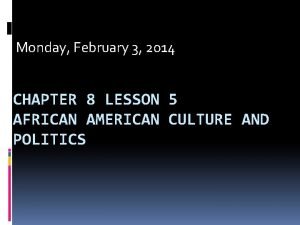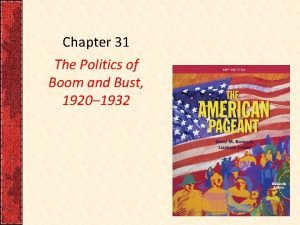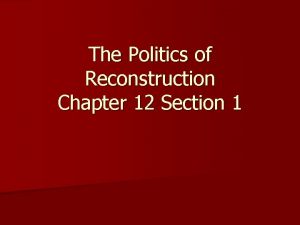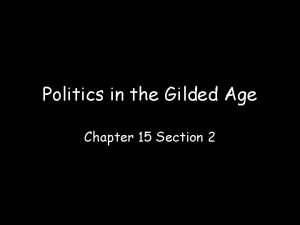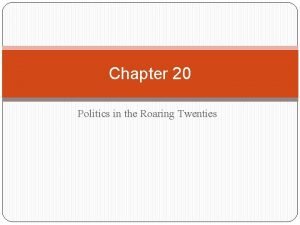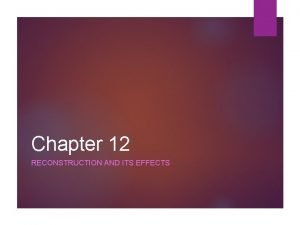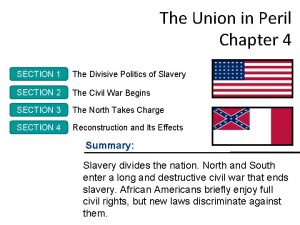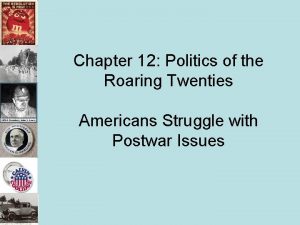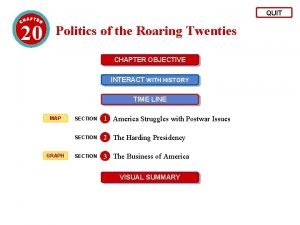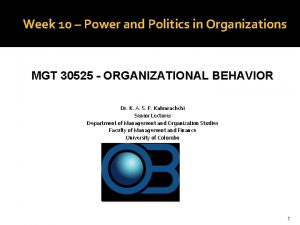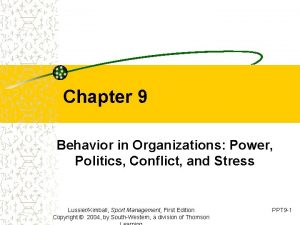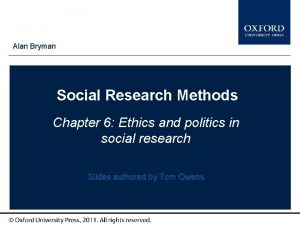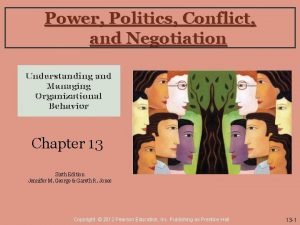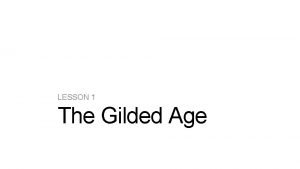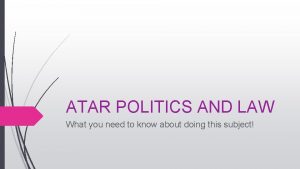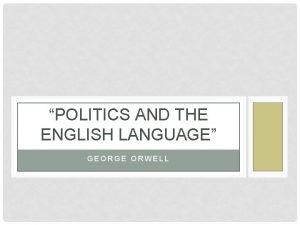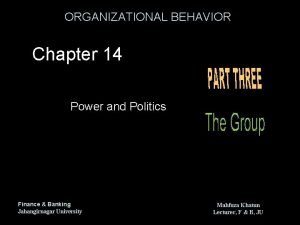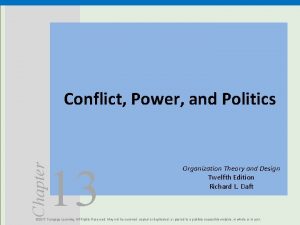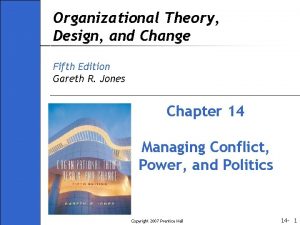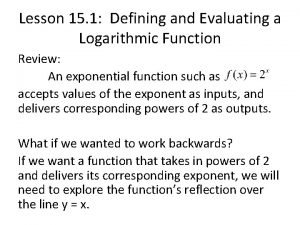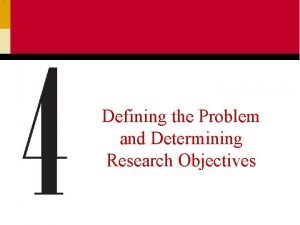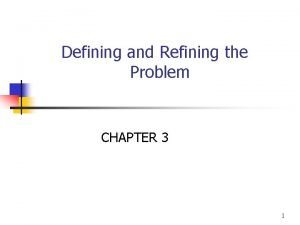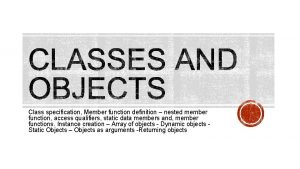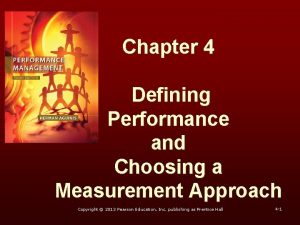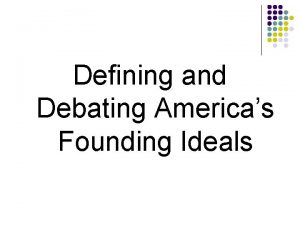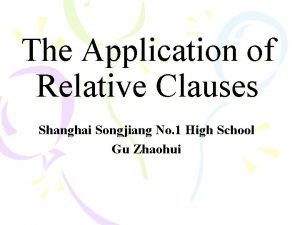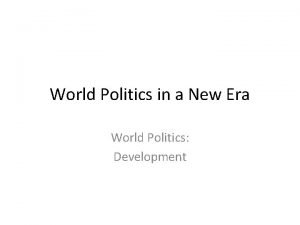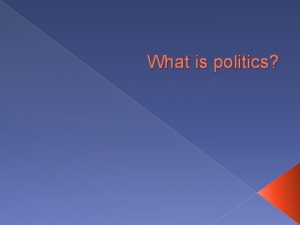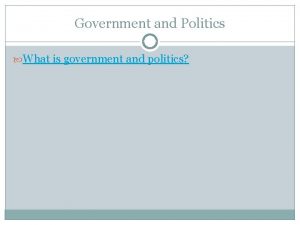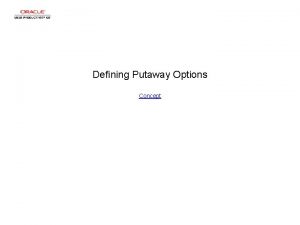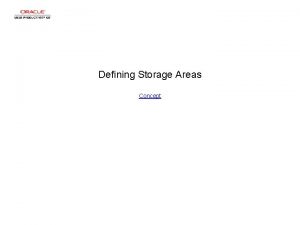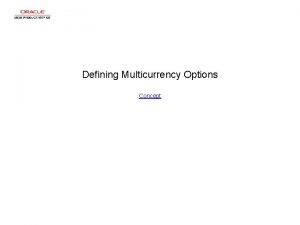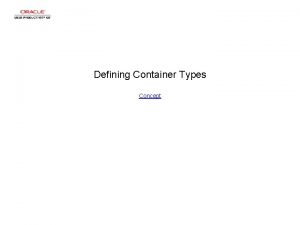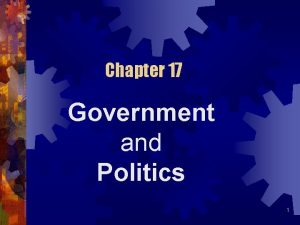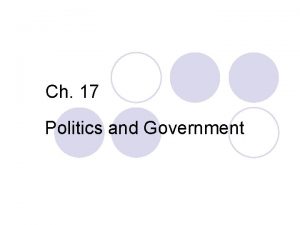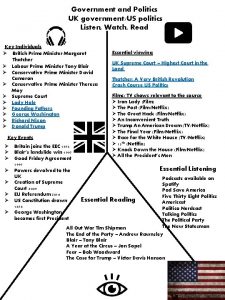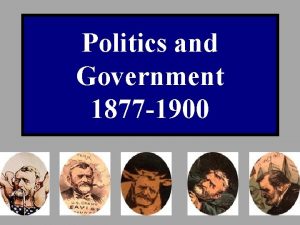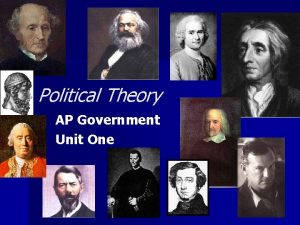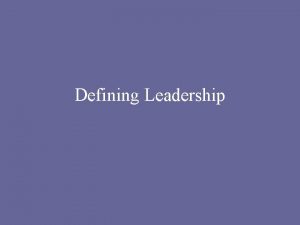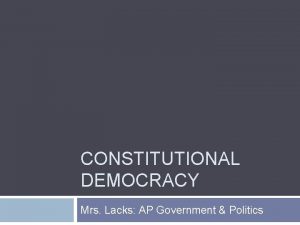Chapter 19 Government and Politics Chapter Outline Defining













































- Slides: 45

Chapter 19 Government and Politics

Chapter Outline § § § Defining the State Power and Authority Theories of Power Government: Power and Politics in a Diverse Society The Military

Defining the State § Abstract concept that includes institutions that represent power in society: § government § legal system § police § Military

Power and Authority § § § Power is the ability of one person or group to exercise influence and control over others. Authority is power that is perceived by others as legitimate, emerging from the exercise of power and the belief of constituents that the power is legitimate. Coercive power is achieved through force, often against the will of the people being forced.

Weber: Types of Authority Type of Authority Example Traditional monarchy Charismatic John F. Kennedy Rational-legal system of authority established by rules and regulations

Growth of Bureaucratic Government § § According to Weber, rational–legal authority leads to bureaucracies. Bureaucratic power comes from legitimacy of the rules.

Theories of Power in Society Theory The State Pluralism As representing diverse and multiple groups in society As representing the interests of a Power Elite small, but economically dominant class

Theories of Power in Society Theory Autonomous State Feminist Theory The State As perpetuating its own form and interests As masculine in its organization and values based on rational values and a patriarchal structure

Theories of Power in Society Theory Political Power Pluralism Derived from activities of interest groups and diffused throughout the public Power Elite Held by the ruling class

Theories of Power in Society Theory Autonomous State Feminist Theory Political Power Resides in the organizational structure of state institutions Emerges from the dominance of men over women

Theories of Power in Society Theory Pluralism Power Elite Social Conflict The competition between diverse groups that mobilize to promote their interests Stems from the domination of elites over less powerful groups

Theories of Power in Society Theory Social Conflict Autonomous State Develops between states, as each vies to uphold its own interests Feminist Theory Results from the power men have over women

Theories of Power in Society Theory Pluralism Power Elite Social Order The result of equilibrium created by multiple groups balancing their interests Comes from interlocking directorates created by linkages among the few who control institutions

Theories of Power in Society Theory Social Order Autonomous The result of administrative State systems that work to maintain the status quo Results from patriarchal Feminist control that men have over Theory social institutions

Political Fundraising Trends

The Power Elite Model § § § The power elite model originated in the work of Karl Marx. According to Marx, the dominant or “ruling” class controls all the major institutions in society. The state itself is simply an instrument by which the ruling class exercises its power.

The Autonomous State Model § § § Interprets the state as its own major constituent. From this perspective, the state develops interests of its own, which it seeks to promote independent of outside interests and the public that it allegedly serves. Autonomous state theory sees the state as a network of administrative and policing organizations, each with its own interests such as maintenance of its complex bureaucracies and protection of its special privileges.

Voter Participation in Democratic Nations

Polling Question § Have you registered to vote? A. ) Yes B. ) No C. ) Not eligible

Voter Turnout in U. S. Elections

The 2004 Elections

Polling Question § Did you vote in the last election? A. ) Yes B. ) No C. ) Not eligible

Political Participation § § U. S. has one of the lowest voter turnouts among democratic nations. Black Americans are much more likely to vote when directly approached by a party representative.

Political Participation § § Women are more likely than men to identify and vote as Democrats and to have liberal views. The gender gap is manifest in women’s views on peace keeping, gun control, and compassion issues.

2004 Presidential Election: Who Voted How? By Gender George W. Bush John Kerry Men 51% 48% Women 48 51

2004 Presidential Election: Who Voted How? By Race George W. Bush John Kerry White 59% 41% Black 11 88 Hispanic/Latino 44 53 Latino 44 56

2004 Presidential Election: Who Voted How? By education No diploma High school graduate Some college College degree Postgraduate degree George W. Bush 49% John Kerry 50% 52 54 52 47 46 46 44 55

2004 Presidential Election By income Less than $15 K–$30 K–$50 K–$75 K–$100 K-$150 K-$200 K George W. Bush 36% 42 49 56 55 57 58 John Kerry 63% 57 50 43 45 42 42

A Representative Government? House of Representatives Men Women African Americans Asian/Pacific Islanders Hispanics Native Americans 1981 1991 2005 416 407 370 19 28 65 17 25 40 3 3 3 6 11 23 0 0 1

A Representative Government? Senate 1981 1991 2005 Men 98 98 86 Women 2 2 14 African Americans 0 0 1 Asian/Pacific Islanders 3 2 2 Hispanics 0 0 2 Native Americans 0 0 0

Military Spending and Federal Budget Outlays

Military Expenditures Per Capita

The Military § § The military is the largest single employer in the U. S. § 3 million men and women serve in the U. S. military. 34% of military personnel are minorities § 20% African American § 8% Hispanic § 6% other racial minorities

Women in the Military § Almost 200, 000 women are on active duty, with an additional 151, 000 in the reserves. § Air Force - 18% § Army - 15% § Navy - 13 % § Marines - 6%

Quick Quiz

1. An abstract concept that includes all those institutions that represent official power in society, such as the government and its legal system, is referred to as: a. social order b. bureaucracy c. the government d. the state

Answer: d § An abstract concept that includes all those institutions that represent official power in society, such as the government and its legal system, is referred to as the state.

2. Power that is achieved through force, often against the will of the people being forced is called: a. legitimate power b. lawless power c. authoritarian power d. coercive power

Answer: d § Power that is achieved through force, often against the will of the people being forced is called coercive power.

3. A type of formal organization characterized by an authority hierarchy, a clear division of labor, explicit rules, and impersonality, is referred to as: a. a rational-legal organization b. a voluntary organization c. an authoritarian organization d. a bureaucracy

Answer: d § A type of formal organization characterized by an authority hierarchy, a clear division of labor, explicit rules, and impersonality, is referred to as a bureaucracy.

4. "Policy should improve access to health care for minority racial and ethnic groups, the poor, and women. " This statement reflects: a. epidemiology b. conflict theory c. symbolic interaction d. functionalism

Answer: b § "Policy should improve access to health care for minority racial and ethnic groups, the poor, and women. " This statement reflects conflict theory.

5. _________ is the ability of one person or group to exercise influence and control over others.

Answer: Power § Power is the ability of one person or group to exercise influence and control over others.
 Non defining relative clause examples
Non defining relative clause examples Relative clauses defining and non defining
Relative clauses defining and non defining Non defining relative clauses as sentence modifiers
Non defining relative clauses as sentence modifiers Defining and non defining relative clauses in telugu
Defining and non defining relative clauses in telugu Defining and non defining relative clauses
Defining and non defining relative clauses Non-defining relative clauses cümleleri
Non-defining relative clauses cümleleri Chapter 20 whose government
Chapter 20 whose government Ap us government and politics unit 1 study guide
Ap us government and politics unit 1 study guide The nature of power politics and government
The nature of power politics and government Example of a sentence outline
Example of a sentence outline Lesson 5 african american culture and politics
Lesson 5 african american culture and politics Chapter 31 the politics of boom and bust
Chapter 31 the politics of boom and bust National government vs federal government
National government vs federal government The politics of reconstruction chapter 12 section 1
The politics of reconstruction chapter 12 section 1 Pendleton civil service act
Pendleton civil service act Chapter 20 politics of the roaring twenties answer key
Chapter 20 politics of the roaring twenties answer key Reconstruction and its effects chapter 4 section 4
Reconstruction and its effects chapter 4 section 4 Chapter 4 section 1 the divisive politics of slavery
Chapter 4 section 1 the divisive politics of slavery Politics in the gilded age chapter 7 section 3
Politics in the gilded age chapter 7 section 3 Chapter 12 politics of the roaring twenties
Chapter 12 politics of the roaring twenties Chapter 20 politics of the roaring twenties answer key
Chapter 20 politics of the roaring twenties answer key Chapter 20 politics of the roaring twenties
Chapter 20 politics of the roaring twenties Power and politics in organizations
Power and politics in organizations Power of media in education
Power of media in education Bureaucracy and politics in india
Bureaucracy and politics in india Power, politics and conflict in organizations
Power, politics and conflict in organizations Ethics and politics in social research bryman
Ethics and politics in social research bryman Power, politics and conflict in organizations
Power, politics and conflict in organizations Philosophy, politics and economics michael munger
Philosophy, politics and economics michael munger Lesson 1 politics and the gilded age
Lesson 1 politics and the gilded age Politics and international relations bath
Politics and international relations bath Politics and law atar
Politics and law atar Relationship between sport and politics
Relationship between sport and politics Politics and the english language
Politics and the english language Contrasting leadership and power
Contrasting leadership and power Power and politics organization theory
Power and politics organization theory Power and politics
Power and politics Lesson 15-1 defining and evaluating a logarithmic function
Lesson 15-1 defining and evaluating a logarithmic function Defining the problem and research objectives
Defining the problem and research objectives Result approach in measuring performance
Result approach in measuring performance Broad problem area in research examples
Broad problem area in research examples Nesting member function in c++
Nesting member function in c++ Defining performance and choosing a measurement approach
Defining performance and choosing a measurement approach Discovering american ideals in primary sources
Discovering american ideals in primary sources Defending and non defining relative clauses
Defending and non defining relative clauses World politics in a new era
World politics in a new era








